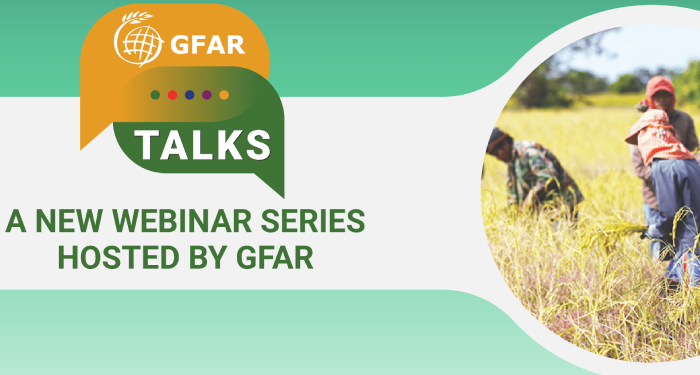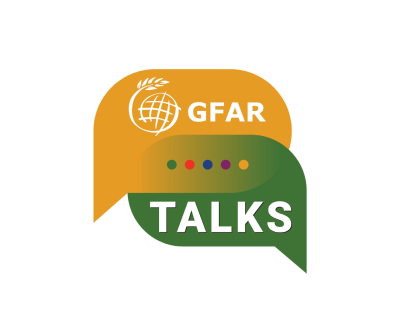This think piece by Sayed Azam-Ali, OBE, is written as a reflection on the third installment in the GFAR Talks webinar series on the topic: “Repurposing food and agricultural policies to make healthy diets more affordable“. GFAR Talks is a showcase for debate on challenging and provocative topics related to agrifood system transformation, climate change and innovations in agriculture.
Under the theme “Healthy Diets. Healthy Planet.”, the World Food Forum takes place from 17 to 21 October, 2022 in Rome, Italy. We are moving in the wrong direction to achieve either. Between 2013 and 2018, worldwide fiscal support for the agrifood sector averaged $630 billion per year of which about 70% went to farmers. Of the $72 billion directed towards consumers, two thirds was disbursed in high-income countries whilst, in poorer countries, subsidies focused on fixing the price of energy-rich crops such as wheat, maize, rice and sugar. Funding for research and development remains skewed towards staple crops grown in rich countries. To date, fiscal support has incentivized the production of a few commodity crops at the expense of diverse, nutritious, climate-resilient and less resource-intensive alternatives. We are rewarding bad diets.
Our current system of subsidies is not ensuring the food and nutritional security for which it was intended. According to the FAO State of Food Security and Nutrition in the World report, it is also inequitable, market distortive and environmentally harmful. Indeed, the report concludes that the world is moving backwards in its efforts to end hunger, food insecurity and malnutrition in all its forms. In 2021, between 702 and 828 million people faced hunger and between 2019 and 2021, the number of malnourished people increased by 143 million. Not only are more people hungry or malnourished, the cost of their food is soaring with food prices higher in December 2020 than any month of the previous six years. Almost 3.1 billion people could not afford a healthy diet in 2020 – and astonishing 39% of the world’s population.
With inflationary pressures on the world’s economies, many still reeling from a pandemic and disrupted food and energy supplies, it will be difficult to justify ever greater public support for the current agrifood system. Instead, the FAO report proposes that global subsidies should be repurposed from calorie-rich staplestowards nutritious `high priority’ foods that contribute to a healthy diet. But what is a healthy diet, and which priority foods should be supported? One target is to identify those food groups whose current consumption is below the recommended levels in dietary guidelines for a healthy diet. Another is to identify how countries can meet their commitment to Sustainable Development Goal 2 (SDG2) of the UN 2030 Agenda for Sustainable Development. For convenience, SDG2 is often truncated to `Zero Hunger.’ However, its complete definition is `End hunger, achieve food security and improved nutrition and promote sustainable agriculture.’ To meet this broader objective, healthy diets must be affordable, available and desirable. To achieve SDG2, all this must be done sustainably by 2030.
By itself, repurposing fiscal support to healthier diets will not be enough. The transition to a healthier food system requires complementary policies, strong institutions and international development finance to diversify food supply chains, redesign food environments and change our eating patterns. For the food industry, these actions might include mandatory limits or voluntary targets for improved nutritional quality of processed foods and drinks, legislation on food marketing, nutrition labelling and healthy procurement policies. Development finance will be needed for poorer countries to support social protection policies to mitigate negative effects on livelihoods for those small-scale producers (including women and youth) who are not currently producing high priority foods. It will also mean mobilizing finance to increase the productivity of nutritious foods and consumer subsidies to increase their affordability. At the same time environmental, health, transportation and energy policies will be necessary for health services that protect poor and vulnerable groups whose diets don’t meet target levels. Repurposing will also require governance mechanisms and regulatory frameworks underpinned by international public investment, political will, and a reframing of the power relations between stakeholders in which small scale producers and consumers have a seat at the table. Repurposing is not simply about redirecting fiscal support from calorific crops to more nutritious ones but about democratizing a food system in which citizens are the agents of change, education about healthy eating is a global public good and the right to food is a basic human right.
If all of this sounds daunting, complex and ambitious, that’s because it is. What is unrealistic is to expect the current system of subsidies for a failing food system to nourish over 9.8 billion people on a hotter planet by 2050. Those who advocate more business-as-usual must be prepared to explain why they failed to help the 670 million people who will still be undernourished in 2030.
Watch the recording of the third GFAR Talks webinar, featuring Marco V. Sánchez Cantillo, Deputy Director and Officer in Charge, Agrifood Economics Division, FAO, and one of the authors of The State of Food Security and Nutrition in the World 2022; and Ivo Jeník, Senior Financial Sector Specialist at CGAP (Consultative Group to Assist the Poor), World Bank:
Join the conversation in the comments below or share this article on social media using #GFARTalks.



